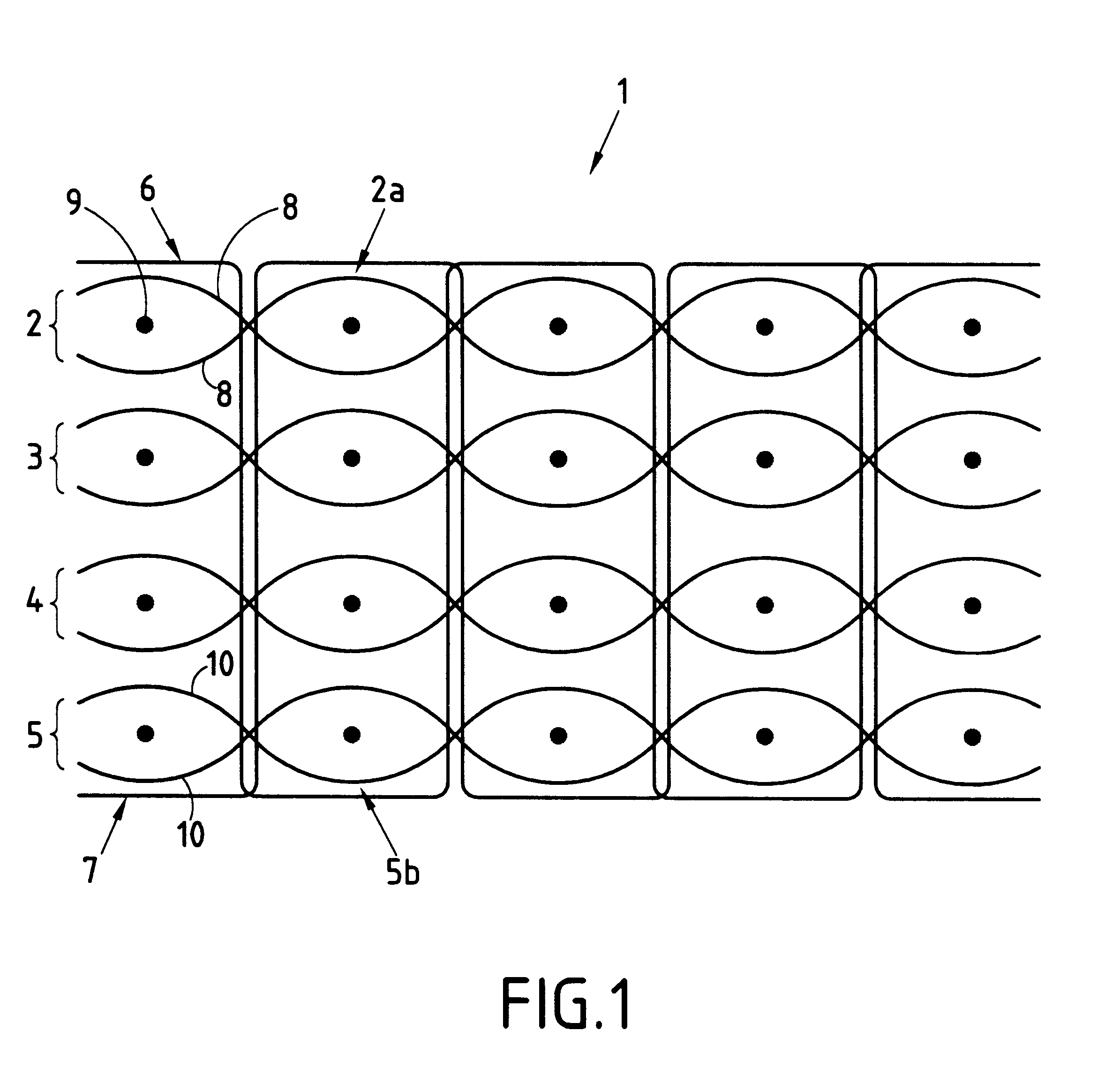Belt for conveying articles at high temperature
- Summary
- Abstract
- Description
- Claims
- Application Information
AI Technical Summary
Benefits of technology
Problems solved by technology
Method used
Image
Examples
Embodiment Construction
The conveyor belt 1 is a textile strip obtained by the conventional technique of multiply weaving. It comprises four successive plies 2, 3, 4, and 5 (i.e. four superposed layers of cloth) and cohesion between them is provided by means of binding threads 6, 7. Each ply 2, 3, 4, 5 is made up of warp threads 8 and weft threads 9. The superposition of four plies is locked by the binding threads which pass in alternation from the top face 2a of the first ply 1 to the bottom face 5b of the fourth ply 5. The binding threads 6, 7 pass through zones that are situated between successive weft threads 9.
As shown in the FIGURE, the textile strip 1 is entirely symmetrical in structure from one face to the other. However in the intended application of the invention, i.e. to a conveyor belt for articles at high temperature, the composition of the various plies and of the binding threads can differ depending on whether the plies are designed to face towards the mechanical conveyor system or whether ...
PUM
| Property | Measurement | Unit |
|---|---|---|
| Fraction | aaaaa | aaaaa |
| Percent by mass | aaaaa | aaaaa |
| Percent by mass | aaaaa | aaaaa |
Abstract
Description
Claims
Application Information
 Login to View More
Login to View More - R&D
- Intellectual Property
- Life Sciences
- Materials
- Tech Scout
- Unparalleled Data Quality
- Higher Quality Content
- 60% Fewer Hallucinations
Browse by: Latest US Patents, China's latest patents, Technical Efficacy Thesaurus, Application Domain, Technology Topic, Popular Technical Reports.
© 2025 PatSnap. All rights reserved.Legal|Privacy policy|Modern Slavery Act Transparency Statement|Sitemap|About US| Contact US: help@patsnap.com

